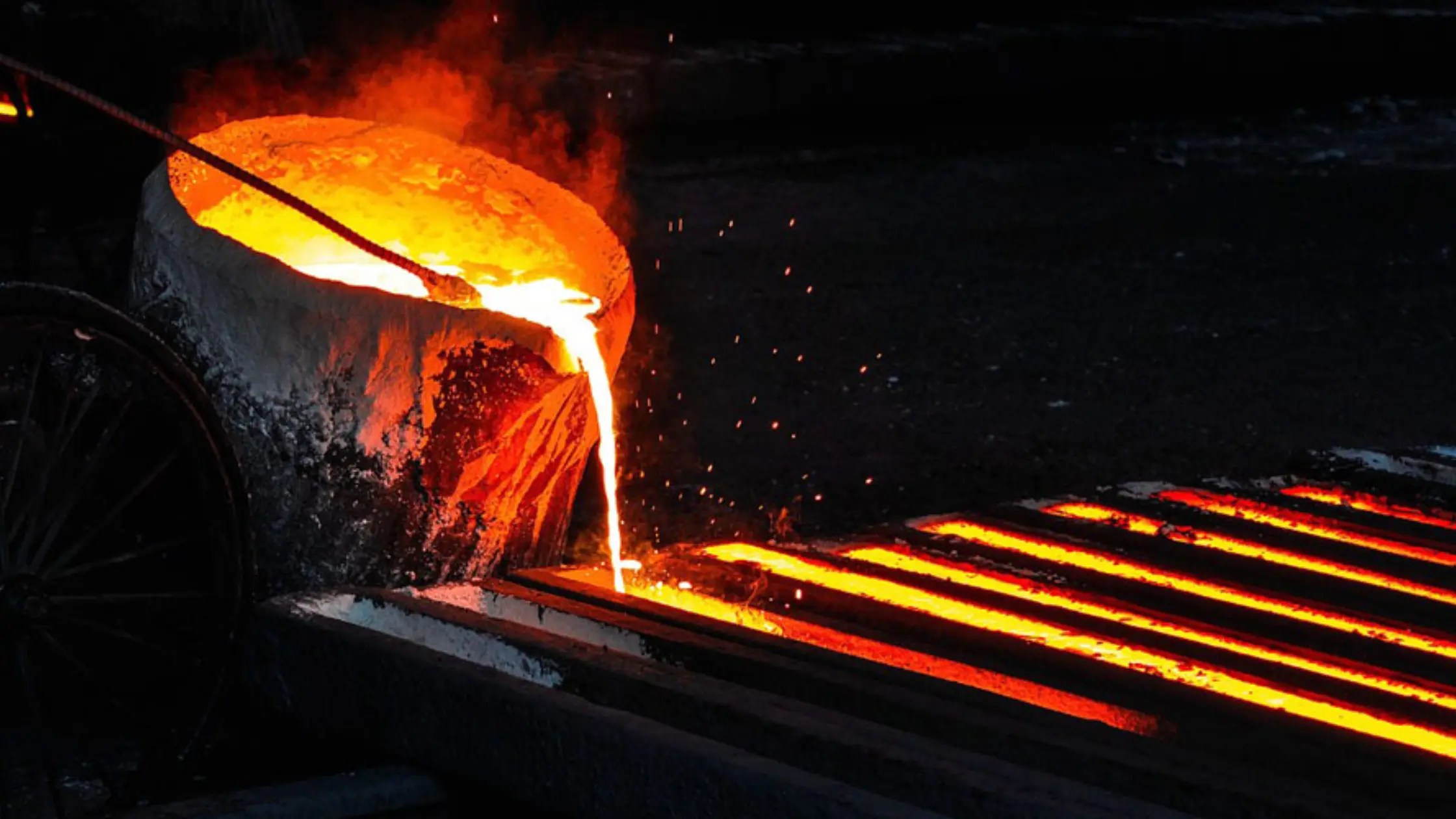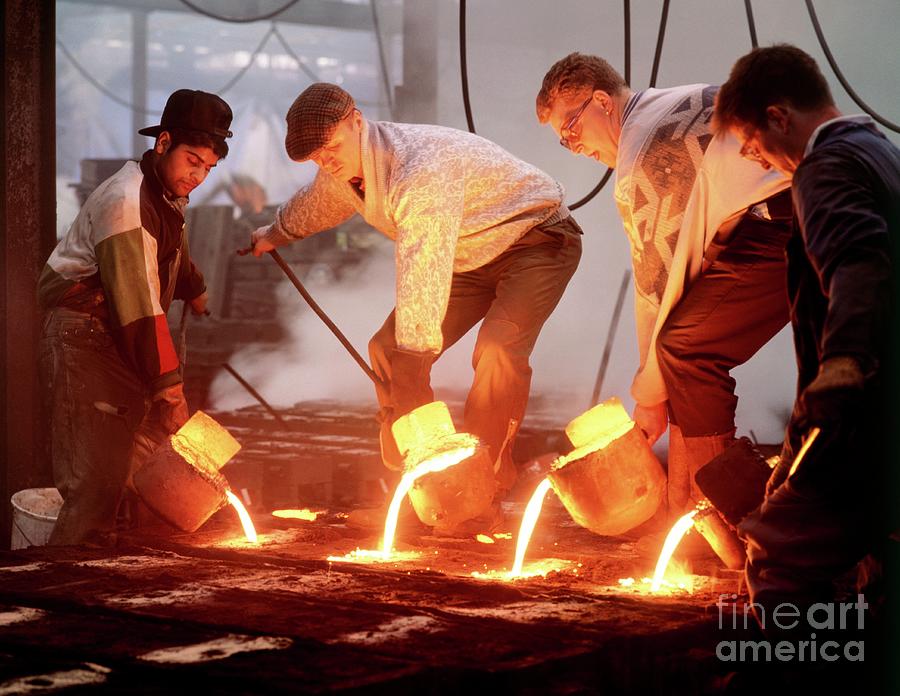Comprehending Metal Casting Procedures: Advancements and Patterns in the Foundry Sector
The foundry sector is experiencing substantial changes driven by technical developments. Innovations such as 3D printing and expert system are improving steel casting procedures, boosting effectiveness and precision. Sustainable methods are obtaining grip, highlighting the value of environmental obligation. On top of that, the intro of innovative materials and automation is boosting general casting quality. These advancements recommend a critical shift in the industry, elevating concerns concerning future directions and ramifications for producers.
Improvements in 3D Printing for Metal Casting
Recent developments in 3D printing modern technology have actually significantly changed the landscape of steel casting. The assimilation of additive production strategies has allowed the quick production of complex patterns and mold and mildews that were impossible or previously challenging to achieve with typical techniques. By using materials such as sand and steel powders, manufacturers can create intricate geometries that enhance design adaptability and reduce material waste. This development not just accelerates the prototyping process but also permits the modification of elements tailored to details applications.
Furthermore, 3D printing promotes much shorter preparation, which is crucial in industries needing quick turnaround for parts. The innovation additionally supports the production of light-weight structures, therefore enhancing power effectiveness in final result. Consequently, the foundry sector is experiencing a change towards even more sustainable practices, driven by the effectiveness and precision supplied by these contemporary 3D printing strategies in steel casting procedures.
The Function of Artificial Knowledge in Precision Production
As sectors progressively take on advanced manufacturing modern technologies, artificial intelligence (AI) is playing a pivotal function in boosting precision manufacturing processes. AI formulas examine substantial datasets to maximize and recognize patterns production parameters, leading to improved accuracy and efficiency. In steel casting, AI help in anticipating upkeep, reducing downtime by forecasting tools failings prior to they happen.
In addition, AI-driven simulations enable makers to model the casting process, refining styles and reducing issues. Artificial intelligence techniques enhance high quality control by spotting abnormalities in real-time, consequently guaranteeing that just products satisfying stringent requirements proceed through the assembly line.

Sustainable Practices in the Foundry Market
Sustainability has actually emerged as a critical emphasis in the foundry industry, triggering makers to adopt techniques that reduce ecological impact while preserving efficiency - Aluminum Casting. One noticeable method consists of the recycling of materials, especially steels, which substantially reduces waste and energy intake. Shops are progressively implementing closed-loop systems, enabling the reuse of sand and various other casting products, consequently lessening the requirement for virgin sources
Furthermore, energy-efficient modern technologies, such as electrical heating systems, are gaining grip, as they lower greenhouse gas discharges compared to conventional methods. Many factories are checking out the use of eco-friendly layers and eco-friendly binders to reduce toxic by-products. Staff member training on sustainable practices has actually additionally come to be necessary, cultivating a culture of ecological obligation within companies. In general, these lasting methods not just add to ecological conservation yet likewise enhance the lasting feasibility of the foundry sector in a progressively eco-conscious market.
Innovations in Materials for Enhanced Casting High Quality
With the constant advancement of the foundry sector, developments in products have come to be crucial for improving casting quality. Advanced alloys and composite materials are increasingly being made use of to boost mechanical residential properties and minimize flaws in spreadings. These products typically offer superior strength-to-weight proportions and boosted resistance to rust and wear, resolving the demands of contemporary applications.
Furthermore, the unification of nanomaterials is getting traction, enabling finer microstructures that lead to improved surface area finishes and dimensional accuracy. Metal Foundry. 3D printing innovations also play a duty in creating intricate geometries with minimal waste, making it possible for making use of specific materials that were previously challenging to cast
In addition, the growth of eco-friendly binders and ingredients contributes to sustainable practices while maintaining top notch results. Jointly, these advancements not only improve the performance of cast items but additionally line up with the industry's change in the direction of sustainability and efficiency.
Automation and Robotics in Metal Casting Processes
Automation and robotics are revolutionizing steel casting procedures by improving and simplifying operations precision. In modern-day foundries, robotic systems are employed for tasks such as mold and mildew handling, putting, and completing, considerably decreasing human treatment. This not just reduces the threat of accidents but likewise ensures constant top quality in production.
Automation innovations, such as computer system numerical control (CNC) devices, promote detailed layouts and complex geometries that were formerly testing to achieve. Real-time data analytics allow manufacturers to keep track of procedures and maximize efficiency continually.
Keep track of The integration of automation leads to raised performance and efficiency, allowing factories to satisfy growing market demands while decreasing preparations. As the sector accepts these advancements, the workforce is additionally evolving, calling for brand-new skills to operate and keep sophisticated equipment. On the whole, the adoption of automation and robotics is a critical trend forming the future of steel casting procedures.
Frequently Asked Concerns
What Is the Background of Metal Casting Methods?
Metal casting methods go back to old civilizations, with proof of bronze casting in Mesopotamia around 3000 BCE. Over centuries, techniques developed greatly, integrating developments in products and modern technology, forming modern industrial techniques.
How Does Metal Casting Effect the Atmosphere?
Metal casting significantly affects the atmosphere through power usage, discharges, and waste generation. Developments in sustainable practices and innovations aim to alleviate these effects, promoting more ecologically pleasant techniques within the industry.
What Security Measures Are Crucial in Factories?

What Are Common Issues in Metal Casting Products?
Common problems in metal casting products consist of porosity, shrinking, misruns, cold shuts, and surface imperfections. These concerns develop from factors such as inappropriate temperature level control, poor mold layout, and contamination throughout the casting process.
Just How Do Foundries Ensure Quality Control in Casting Processes?
Factories carry out strenuous quality control actions via routine examinations, standard screening, procedure surveillance, and adherence to market criteria. These methods assist identify issues early, making sure the honesty and reliability of the last casting items.
Technologies such as 3D printing and fabricated intelligence are improving steel casting processes, improving effectiveness and precision. Current developments in 3D printing innovation have actually considerably changed the landscape of steel casting. Automation and robotics are changing metal casting processes by improving procedures and improving precision. Metal casting techniques day back to ancient worlds, with proof of bronze casting in Mesopotamia around 3000 BCE. here Typical problems in metal casting products include porosity, contraction, misruns, cold shuts, and surface flaws.